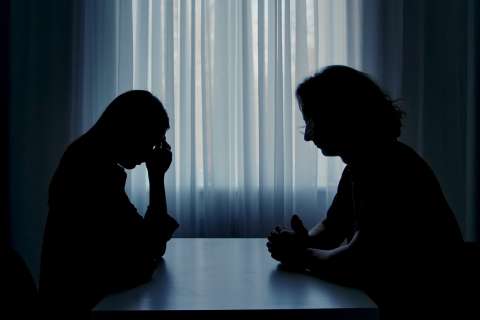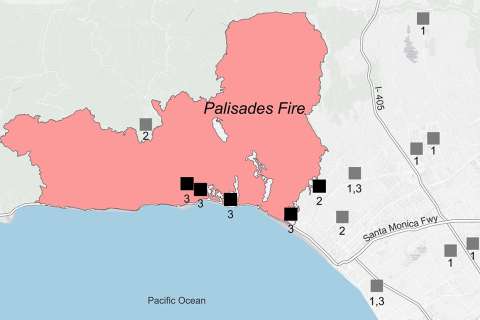When Judy Martin received her diagnosis of acute myeloid leukemia in January 2023, it was frightening and all too familiar. She had taken care of her husband during his battle with the same bone marrow cancer 15 years earlier, until it finally claimed his life.
But there was an unfamiliar aspect that was equally scary – she was alone, facing a terrible disease and the long road of treatment mostly by herself, at the age of 78. She had good friends and relatives, as well as a very helpful daughter nearby. But she did not have that one person who would be with her every step of the way, the role she had played for her late husband.
"Here I had been living a very full and independent life, and now at 78 years old I am facing serious medical treatment and wondering how I’m going to take care of myself and get through this," Martin said.
Wanting to keep some semblance of her independence, Martin dug deep and focused her inner strength and resolve. She committed to getting through the process and beating blood cancer as she began treatment at UCLA Health’s Cancer Care clinic in Westwood under the supervision of Wanxing Chai-Ho, a hematologist oncologist. She also receives support services at Santa Monica UCLA Medical Center.
Calling on critical thinking skills she developed as a Certified Public Accountant, Martin organized her activities and her house so that she could function and be reasonably comfortable at her weakest points during her treatment, with minimal help from the outside.
Martin didn’t want to be trouble for her daughter, who is a busy practicing attorney with two children in grade school. Other out-of-town relatives were able to fly in to stay with her at times, and friends helped out as well, but making things as easy as possible for anyone helping was Martin’s goal.
Planning in advance
After using her own game plan and getting through her original treatment successfully, Martin thought about all of the other patients who, like her, have to navigate this exhausting experience while retaining some of their independence. Hoping to help others prepare, she wrote a simple but detailed guide for single people going through cancer treatment or any other disabling medical condition.
"I know it helped me to have a plan and to be organized during my treatments and recovery, so I just wanted to share with other patients some of the strategies that I found helpful to get through this in the best way possible," Martin said.
The guide, which Martin is working to get published, goes into detail about organizing one's living space to be prepared for times of weakness, fatigue and generally not feeling well, to make things easier for the patient and caregivers.
Martin's guide, tentatively titled “Now What Do I Do?: A Single Person’s Practical Guide for Planning At Home Care,” covers some major adjustments a patient might consider, such as installing an adjustable hospital-style bed on the ground floor of a home; during tough times the patient will be spending hours resting in bed and will likely want to avoid climbing stairs to do so. She recommends economical options including purchasing or borrowing a bed and other items — Including wheelchairs, walkers and adjustable bedside tables – from charitable groups.
In the guide, Martin emphasizes safety tips, such as clearing an easy well-lit path from bedroom to bathroom. She also offers general tricks to make life easier, including always having throat lozenges and ginger chews in a bedside drawer, for dealing with the dry throat and nausea side effects of chemotherapy. She recommends having a "grabbing tool" for reaching things that might fall on the floor, such as a pill or tissue, to help when a patient might not have the energy to get out of bed. She also offers tips for organizing important medical contacts and for keeping a log of symptoms and drug reactions to communicate to doctors and nurses.
Martin's guide similarly stresses the importance of mastering the use of online ordering of groceries and other essentials for home delivery or pickup (by friends or volunteers). When you are home and feeling poorly, it is a comfort to know that tissues and healthy snacks can also be delivered on a subscription schedule.
While Martin's guide is aimed at making the patient's life at home easier, a big part of that is organizing the home to make it easier for visiting caregivers, whether it's a professional nurse or a friend or family member.
She offers advice that a patient might not think of ahead of time, such as keeping in stock two colors of towels and face masks – one color for the patient and one for the caregiver – to keep them separate.
"You want to have these issues handled before you start your treatment, because while you're in it, you probably won't have the strength or energy to change things around," Martin said.
The guide is a big part of Martin's effort to give back to the community that has helped her through her cancer care. She remembers all too well the fear and anxiety she felt before starting her treatment.
"It is a shock to anyone to face difficult treatments and have their life turned upside-down. It makes it a little smoother when you have a plan, so I hope this can help other patients going through this kind of ordeal," Martin said.
Bouncing back
Always a strong, resilient woman, Martin keeps pushing forward despite health setbacks along the way. Before the cancer, she survived three strokes and hepatitis. Her doctors have told her she will need chemotherapy every five weeks for the rest of her life to treat the leukemia, which otherwise can interfere with normal blood cell production.
"Sometimes it's hard to believe that just a couple of years ago I was living in Colorado and had a small organic farm with goats and chickens," Martin said. "I would go hiking with my much younger friends who were forest rangers. Now I am walking with a cane and sometimes a walker, but it's not too bad, and I can get around pretty well. I will bounce back."
She had to sell her Colorado house and farm and give away her dog when she moved to Santa Monica to be near her daughter and advanced medical care.
Working on her fitness and mobility, Martin hopes that with physical therapy and tai chi – which she practiced for years before her illness – she will soon be able to use the public bus system to help her get around the city on her own without relying on her daughter.
She has always believed in giving back through community service as well, and has done volunteer work for a library foundation, the Methodist Church, food banks, community arts centers and for a homeless shelter in Colorado.
"There is always someone who has it worse. It just feels right to do whatever you can, to give your time and help other people,"' Martin said. "That is all I'm trying to do with all of this, is just to make it a little easier for any patient who wants to be independent and stay in their own home."
Tina Daunt is the author of this article.





